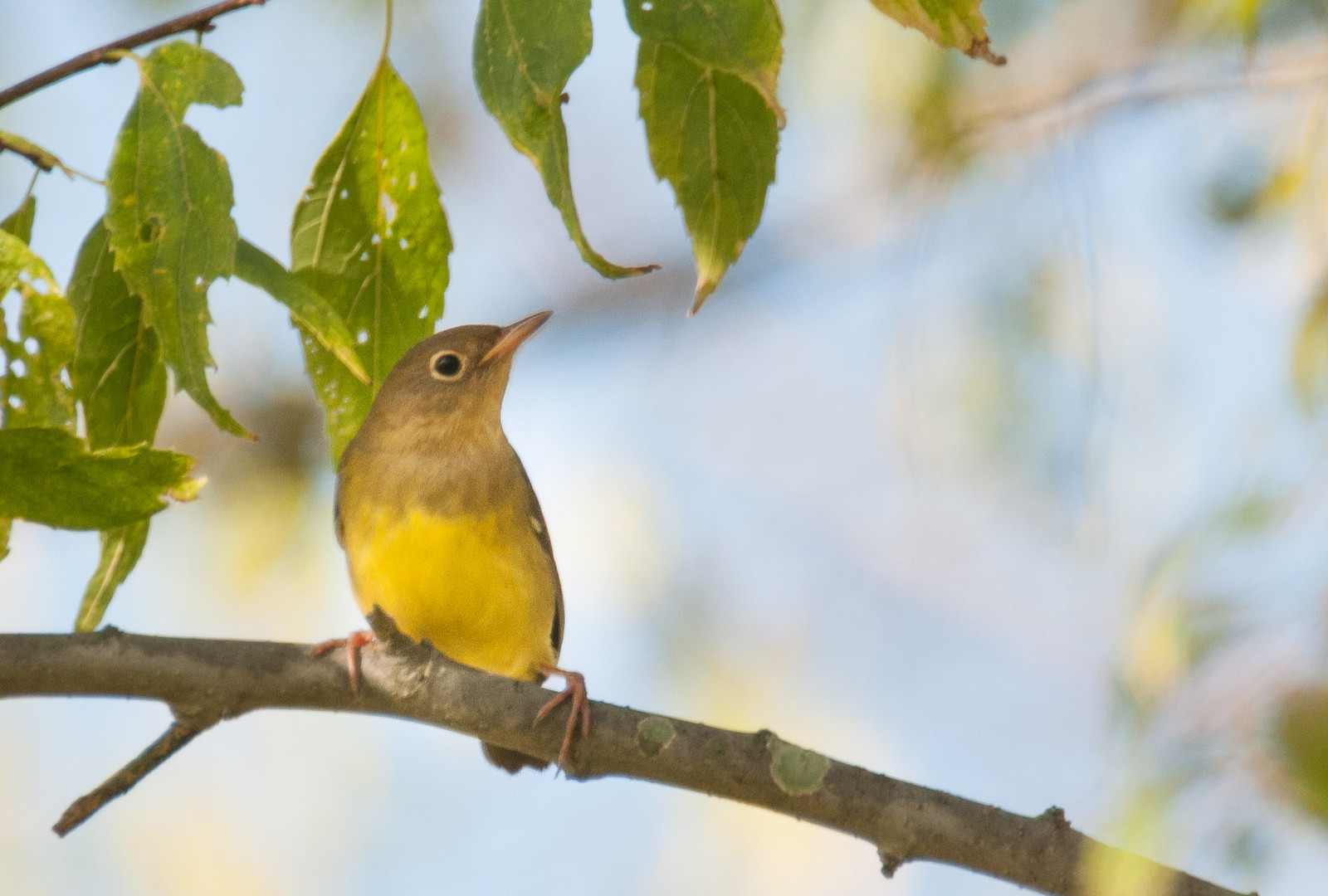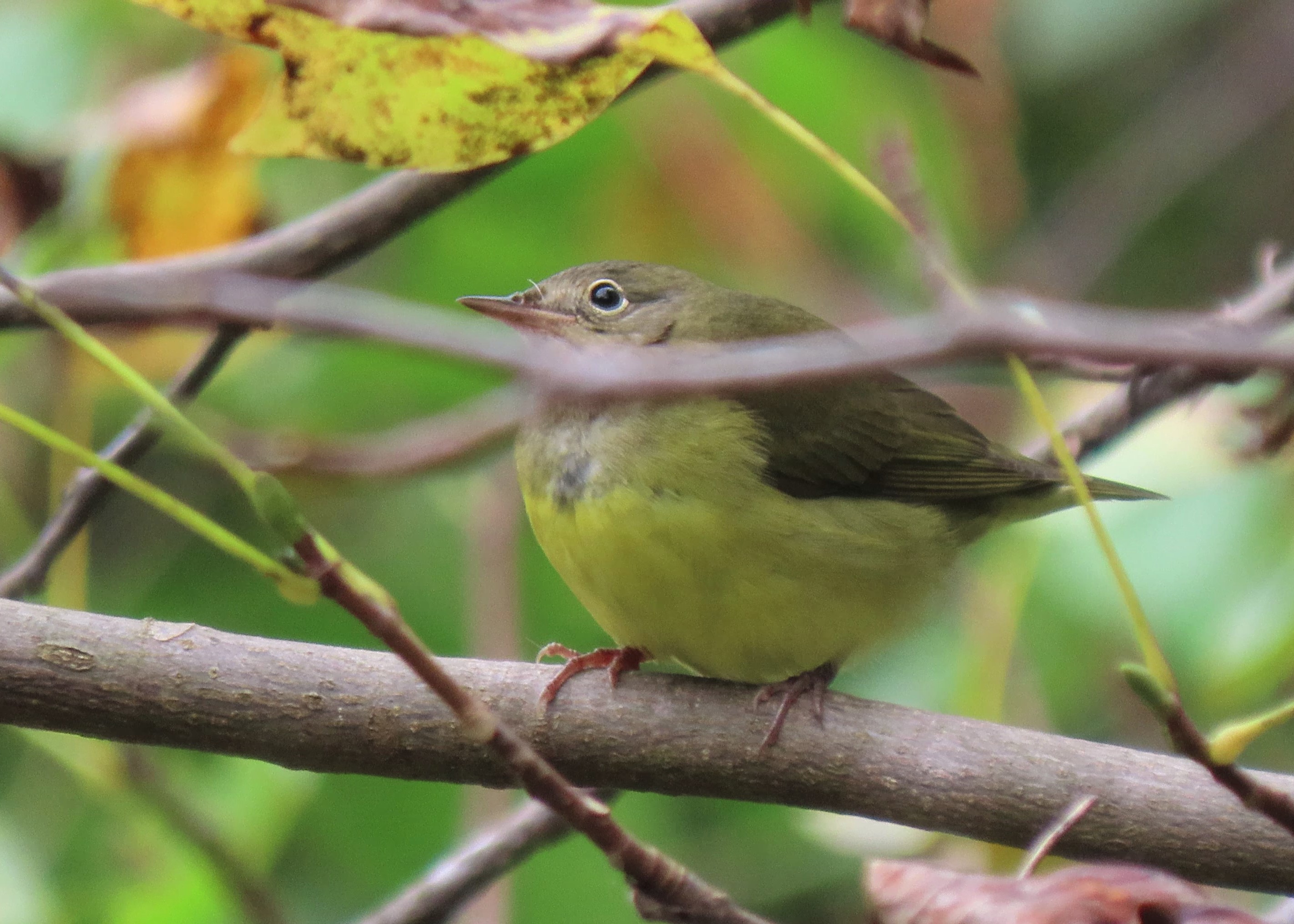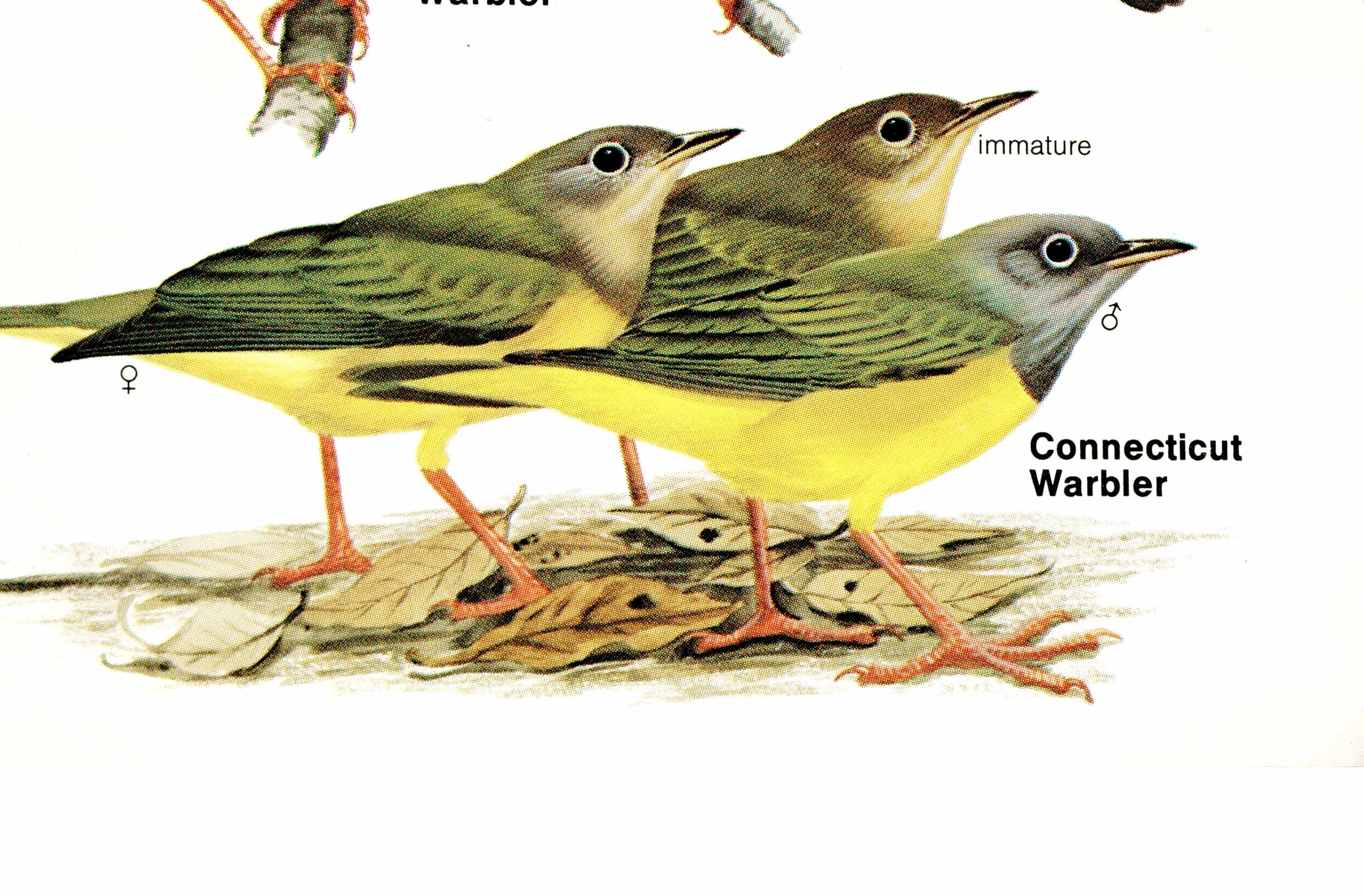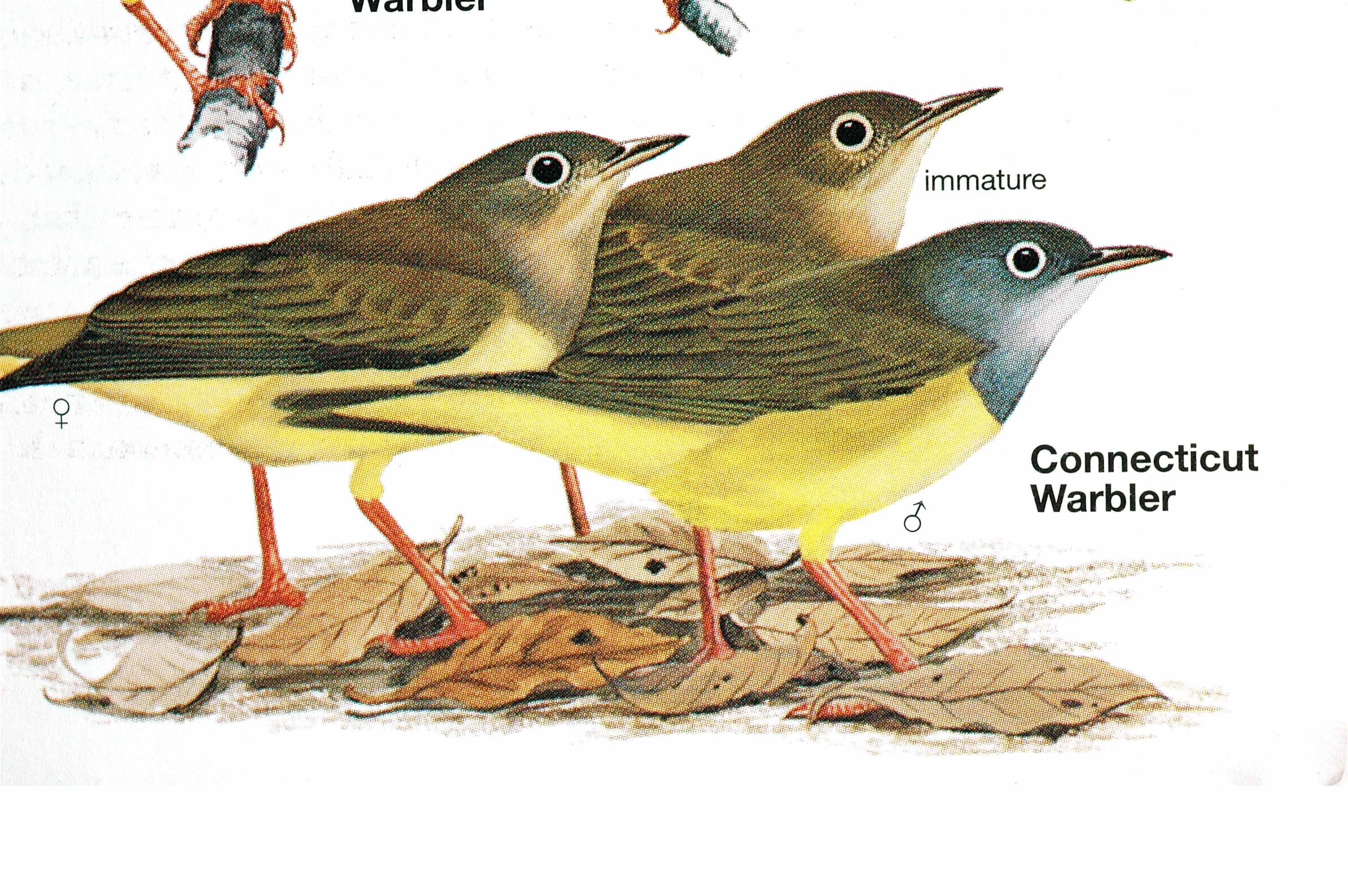| Infrequently Seen |
Spring: A Connecticut Warbler has never been recorded at Monticello Park during the spring. The species migrates through the central part of the US to reach its breeding grounds in central Canada and the states around the Great Lakes.
Fall: The Connecticut Warbler is probably the most difficult species to see of all the birds on this website. David Sibley describes it as "uncommon, secretive, and difficult to spot". After the breeding season, some migrate south through the Washington metro area, with many of these being first-fall birds. A small number have passed through Monticello. At many venues in the Washington area, they tend to be found in October, but Monticello has had records of Connecticut Warblers in September.
Where to See Them in the Park
Connecticut Warblers are skulkers. They often walk along the ground in areas with fairly dense cover, strutting like an Ovenbird. If you are very lucky, one will perch motionless on a branch for a long period. Here is a video of a Connecticut Warbler taken by Bill Hohenstein.
Physical Description

Connecticut Warblers are large and stocky. In the fall, the males have a gray hood, the females a grayish-brown hood, and first-fall birds a brownish hood. All plumages have a bold white eyering, a yellow belly, an olive back, and yellow undertail coverts. Because other warbler species have a gray hood and an eyering, observing behavior can provide important identification clues.

Vocalizations
You are not likely to hear the song of a Connecticut Warbler at Monticello Park. The song is a loud and explosive series of notes, sounding like chuppy-chuppy-chuppy-chuppy-chuppy-chup.
Hear the vocalizations of the Connecticut Warbler.Notes
As you can see in the above photograph, the Connecticut Warbler has unusually large feet. When the first edition of the National Geographic Society's Field Guide to the Birds of North America was published in 1983, many people thought that the feet in the illustration were excessively large.

When the Second Edition of the guide was published in 1987, leaves covered up the enormous feet.

Origin of Names
Common Name: Connecticut because Alexander Wilson found the first specimen there. The New World Warblers were named for their similar appearance to European warblers, to whom they are not related. Most of the New World warblers do not warble (sing continuously with notes that change frequently).
Genus Name: Oporornis means end of summer bird.
Species Name: Agilis means active.
Connecticut Warbler video footage
Return to the Index
